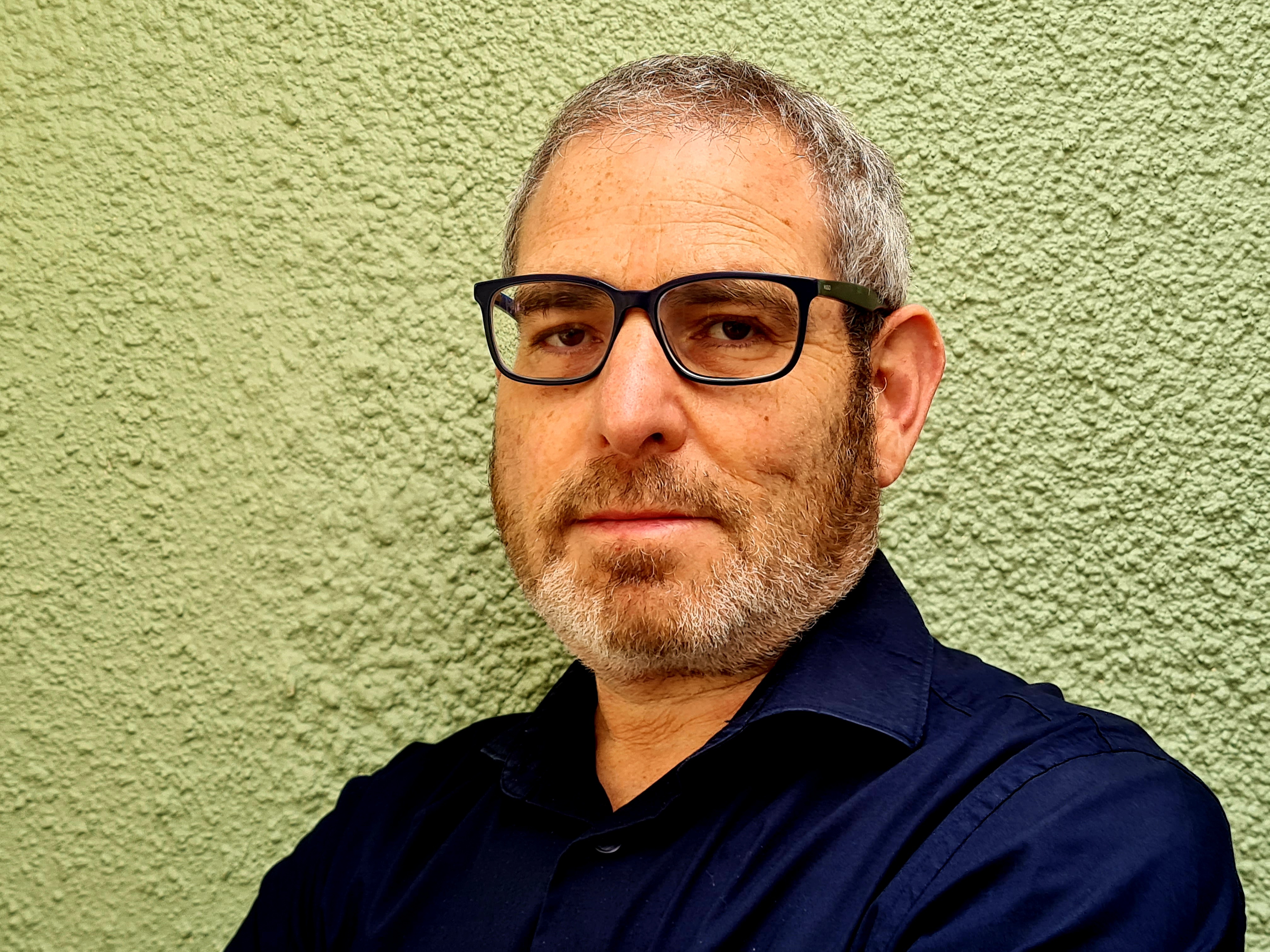Nimrod Zalk is Industrial Development Advisor in the Office of the Director-General of the South African Department of Trade, Industry and Competition (DTIC). He is also a non-executive director on the board of the South African Industrial Development Corporation. He chairs the steering committee of the Industrial Development Think Tank at the University of Johannesburg and is a Scientific Committee Member of the African Programme on Rethinking Development Economics (APORDE). Nimrod Zalk has been involved in a range of policy, research and academic processes related to African industrial development and trade, including development and implementation of South Africa’s National Industrial Policy Framework and various Industrial Policy Action Plans.
What is your analysis of South Africa’s government and civil society responses since the beginning of the COVID crisis? Please give us a broad assessment of progress so far.
Let me preface the discussion by speaking of the particularities of the South African economy. My own specialisation is as an economist focused on structural transformation and industrial policy. I am based at the Department of Trade, Industry and Competition, and at the moment I am responsible for a small advisory unit under the Director-General. This involves running strategic research programmes, particularly the Industrial Development Think Tank we established at the University of Johannesburg, which looks at a wide variety of structural transformation issues not only in South Africa but in the wider Southern African region.
In my response to your question, you should remember I am not a medical scientist. We’ve experienced several ups and downs in responding to the COVID crisis. Initially every country around the world was floundering and figuring out how best to respond to the crisis. The initial response from a public health point of view was quite robust, by making sure there were basic social distancing, handwashing and masking measures in place. Periodic lockdowns continue, depending on the prevailing severity of infection rates. There was some contestation around the severity of lock-down measures, though from a public health viewpoint, at certain times you need very strong action. There was pushback from some people who said lockdowns were too severe and stifled economic activity. We’ll only be able to assess after the fact which broad view is correct. Of course, as vaccines have become available, the South African government has sought, procured and rolled them out with the private sector playing a central role. This took time to get underway but now this is happening at significant scale. As of last week, 21% of adults had received at least one dose of the vaccine. But clearly, this is nowhere near the 80% level targeted.
In terms of the response from the DTIC, there have been some positive aspects from the pandemic, such as success in mobilising production of PPE, especially masks, drawing on capacity in our clothing sector. A number of factories could re-orient activity to produce masks. There was also a project to produce ventilators, which got started very quickly, with the aim of scaling up production of a fairly basic “fit-for-purpose” ventilator. South Africa is one of the few African countries which has the capacity to manufacture some vaccines. One private company, Aspen Pharmaceuticals, has been producing significant numbers of doses largely under licence, mainly through fill-and-finish operations. There have been some limitations though, where vaccines produced here under contract for international pharmaceutical companies, have then been exported elsewhere. Now the emphasis has shifted, and greater attention is being paid to making these vaccines available to South Africa and the broader region. The publicly owned BioVac institute is also establishing a joint venture to develop stronger vaccine capacity for COVID and other diseases, expanding its existing production. We’ll need to ramp up production since there is a massive requirement from the rest of the continent. Such a vaccine effort is not a one-off need but will generate ongoing requirements, for boosters, and so on. So BioVac is a very welcome development producing for the continent, the only one other being based in Dakar, Senegal.
Another significant area in which South Africa has been very active is on intellectual property rights, partnering with India to make the case for a TRIPS waiver to enable broader production of vaccines by developing countries. This very important multilateral initiative has not been universally supported. The US provided positive support, but the EU has not. However, the push for a TRIPS waiver has certainly brought pressure to bear on certain companies, and pushed them to act, even if they are not formally obligated to provide the IP, probably in order to forestall more interventionist measures around vaccines.
Another important aspect of our response has come from the agriculture and agri-food sectors which proved pretty resilient and continued supplying during the pandemic without significant disruptions. This is because they have a large local footprint with much less reliance on imports than other manufacturing industries. This is important going forward, with significance for the continent more broadly, since Building Back Better should mean economies are less geared towards “just-in-time” manufacturing systems. We must factor in the need for resilience, in our ability to produce the essentials – such as healthcare, pharmaceuticals, food and so forth. The COVID moment will have importance for the whole continent if it challenges us to strengthen production capabilities. Over the last few decades, there has been discouragement from conventional policy advice about building local production systems, and a view that you can always import the things you need. But the COVID crisis points to the need to change the structure of African economies. It is no longer sufficient to export primary and semi-processed commodities, we must find ways to add much more local value, and construct more sophisticated production structures. This is not a turning away from trade, but being more strategic about trade, and the role that it plays in structural transformation and broader economic development.
I enjoyed reading your article for Project Syndicate on the African Continental Free Trade Agreement, which argued you should avoid seeing this as a magic silver bullet. What does a strategic approach to trade mean in this context, and how could AfCFTA really help achieve structural transformation in different parts of the continent? What else is essential, alongside a reduction in tariff barriers?
There are two broad approaches to trade. The first, an orthodox approach and second a more structuralist approach to trade. The first emphasizes bringing down trade barriers, whether tariff or non-tariff barriers. The structuralist approach is not anti-trade but asks - what is the appropriate role for trade for countries at a particular level of development? The great breakthrough came from the great development economist Alice Amsden who wrote on South Korea. She pointed to countries seeking to develop a more sophisticated production structure needing to import more, by bringing in capital equipment essential to upgrade their manufacturing sector. In the case of Africa, there is also the need to import equipment to increase productivity growth in the agricultural sector. In order to increase capital imports, countries will need to generate exports, but this demands a very different approach to trade. It is not just a question of opening up, and saying let countries specialise in their comparative advantage, which really means specialising in what you do right now. When you look at broad patterns of production and trade, African countries tend to export primary and semi-processed commodities, while importing manufactured consumer goods. Let’s see where this approach leads us by taking an example or two – take neighbouring countries like Zambia and the Democratic Republic of Congo (DRC). Zambia overwhelmingly exports copper and DRC exports copper, cobalt and other minerals. So today, what is the basis for expanding trade between DRC and Zambia, unless they can change their production structure? If we take as the starting point the current production structure, growing trade on the continent necessarily implies countries changing that structure, starting with what they produce and looking for complementarities with other African countries. What light manufactured products do their neighbours demand which could replace imports from outside the continent? That’s an important element.
When you look at trade analyses of the estimated benefits of the AfCFTA, they lump a lot into the general category of non-tariff barriers. Tariffs between African countries are actually not very high, but there are a lot of other barriers which need to be dealt with, such as unnecessary red tape which doesn’t serve any productive purpose and facilitates rent-seeking and corruption. However, the biggest category of non-tariff barriers reflects infrastructural backlogs in ports, roads, rail and energy systems, and IT networks. Even some border-post blockages to some extent require an investment in improving digital processes, to gain greater efficiency. Upgrading border-posts is tangibly different from regulatory obstacles which can be signed away at the flick of a pen.
We live with the paradox that the continent has historically contributed the least to global CO2 emissions but now must upgrade energy systems, without the opportunities that other countries have had. If a country has coal reserves, it now has to sterilise those reserves for very good reasons - but where is the corresponding international support to help build greener infrastructure? Financing this infrastructure and structural upgrading is terribly important. Although there is a strong moral case for the global North to make available a very large amount of concessional funding, it is not clear that this obligation will in fact be met. It would be a mistake for the African continent to hold its breath and wait for the global North to do the right thing. So, the question is how to get our own financial institutions to meet this challenge. Development banks have a central role here, scaling them up to give them the mass they need, not as a substitute for private investment but as a complement and catalyst for larger scale private investment on the continent.
A good number of analysts say the COVID pandemic offers a valuable opportunity to rethink priorities and development pathways, because it has shown up the need for a broader, more diverse economy, the importance of regional trade, and the possibilities from greener growth. Do you think this is indeed a turning point for the continent, and what kind of economic thinking is key to driving reform?
It certainly represents an opportunity, but it won’t automatically represent a turning point, unless we make it so. The first element for making this a turning point is a much larger-scale public health response to the crisis itself. “Our World in Data” shows which countries are not on track to vaccinate 40% of their people by 2022. States not on track are overwhelmingly African countries. We need a dramatic scale-up of vaccine provision to the continent. It seems the contributions to COVAX have not been anything like at the scale required. Vaccine allocation has followed geopolitical considerations rather than those of need. The US has partnered to provide significant vaccinations to south Asia, which is more a function of responding to Chinese influence than really taking a good look at the most urgent parts of the planet. And the North has been vaccine hoarding. So, first of all, we need a massification of vaccine provision.
Going forward, yes there is a great opportunity for the continent, but let me highlight what we must do. There is tremendous agricultural opportunity on the continent, which doesn’t get the emphasis needed. There is a large stock of land which could be cultivated, which is currently either not farmed or is not generating the yields found elsewhere. There remains a big need to raise yields of staple crops. There is recent interesting work, by Cramer, Sender and Oqubay, which talks about the “industrialisation of freshness”. Structural transformation is not limited to traditional manufacturing sectors. When you look at parts of the agricultural sector, there is tremendous scope to transform and upgrade, especially in horticulture. COVID has increased demand for things like citrus fruit, which are high in vitamin C. The rising affluent middle classes are demanding high value fresh produce. This represents an enormous opportunity to lift many people out of poverty, alongside more conventional manufacturing. Some good work has come out of UNU-WIDER recently showing the absolute number of people employed in manufacturing in Africa has actually increased in the last two decades, although productivity growth has been modest. So there is definitely more African manufacturing than has traditionally been perceived, which can further be built upon. There is the widespread idea of leapfrogging – sometime used loosely – but there really is a chance that solar and wind power could help African countries leapfrog into renewables-based energy. Mining also has a role to play. The big change to be managed involves the shift from “climate destructive minerals”, such as coal and oil, to making the most of “climate smart minerals”. The continent has a very large stock of minerals essential for the green transition – cobalt, copper, platinum group metals and nickel for example. Let’s not be anti-mining, but rather ask how mining can help achieve structural change and contribute to green transitions. Going back to trade, while we should not expect the AfCFTA to be a silver bullet, it makes sense to expand regional trade, and understand when to expand trade to the rest of the world. Trade offers the chance to export to those markets with the highest growth, which can generate the most value for African countries. Again, let’s be strategic in our thinking about trade. Don’t take a blinkered view which focuses only on the rest of the continent.
Energy and power are critical for transformation of the economy. South Africa has big coal reserves, which power a large part of the energy system. There has been a series of “Just Transition” dialogues in each province in South Africa, to explore how to shift away from coal. How might this transition happen – given South Africa’s energy profile – to bring the country to net zero by 2050/60 and which brings people along with you?
Part of the Green Transition is a technical exercise, which involves assessing appropriate technologies and markets, and asks what can countries and firms produce, given their capabilities, and how to upgrade these. But this transition to green energy is evidently not just a technical question. It needs an analysis of the political economy to manage this structural change. The political economy dimensions are more challenging than the technical, though clearly, they are meshed together. What makes South Africa’s transition very challenging is we have a lot of coal, and many interests associated with coal, so it’s entirely understandable, since many thousands are employed in coal mining. What do you say to those workers in the coal sector? You can’t say we all face a wonderful green future, if they won’t be able to feed themselves and their families. What are the alternative employment opportunities which can be generated as part of the transition? That is challenging in the South African context where we already have very high levels of unemployment. Then alongside the coal miners, there are shareholders, and those involved in the logistics, the trucking of coal from mines to power plants. There is no neat answer. No-one has been able to say when we lose jobs in coal mining in the province of Mpumalanga that these people can easily find employment in some other industries. There may be some jobs associated with solar power plants, but they don’t themselves employ a lot of people directly. But if we don’t seize the moment now, we set ourselves up for failure in the future, since as Carbon Border Taxes kick in, and funding dries up for coal mines, it’s becoming a dead-end industry. We need to recognise this. I would like to see a lot more detailed technical work, sector by sector, to identify what alternative jobs there might be for people with the same skills as coal mining. Again, horticulture is one part of the story, certain kinds of manufacturing might fill the gap, but its hyper-competitive since the 1990s and the entry of China, India, and eastern Europe into the global manufacturing economy. A fair transition requires a lot more work – there are no easy answers. The other area important for Africa is the willingness to recognise gas as a transition fuel. Everyone is clear there will be no more coal in the medium to long term, but what about gas reserves? There is a strong push from environmentalists to say “don’t go with gas”, but I think there needs to be more openness to this option. Don’t let’s cut off gas development as it represents a cleaner form of energy on the way to net zero.
From what we’ve seen so far, the pandemic has highlighted the growing crisis of multilateralism. What is your analysis of rivalry between nations and blocs, and relations between China and US? What are some actions and positions for Africa to take in the current global context?
This is very difficult to answer. I think it’s important for African countries and other developing nations to continue to support developmental multilateralism and ensure policy space, to enable appropriate policies to be put in place. The Doha round has been limping along, and it’s been impossible to conclude this, largely due to the pushback by rich economies against Special and Differentiated Treatment for developing countries. Countries need to push on multiple multilateral fronts and stay engaged with what is happening bilaterally. For example, countries have all signed up for the AfCFTA but there is also a strong push from the UK and EU to sign up individual countries in Africa to agreements which could punch a hole in parts of the AfCFTA. Some have decided to both sign up and go along with a bilateral process – it certainly complicates things. One area of importance is what’s happening in the digital space. There is intense pressure from the US to implement certain trade rules which place as many restrictions as possible on countries developing their own policy measures and responses to the digital economy. In the US proposal there are two dozen things they want to see bedded down in this agreement on the digital economy. For example, they say you can’t tax digital transactions or insist on localisation of servers, or restrict the flow of digital trade and associated transactions. But, in a context where we don’t really know what the future of the digital economy looks like, it would be dangerous for developing countries to sign up and thereby handcuff themselves in perpetuity to this set of rules. They need to preserve the policy space. They are presented with magical ideas of how they can leapfrog economic development by better access to digital platforms. But the idea is not really developed. It can be tantalising for them to see this magical thing called digitalisation, but they should not be signing away their rights now. It’s not just an economic issue but a question of what kind of digital rights we seek in terms of privacy, of human rights. In a way, there are two dystopian visions for digital platforms, those which are as intrusive as possible to sell as much stuff as possible, and the others which desire to have access to as much personal information as possible to exercise political control. To me this is a poverty of choice for the bulk of developing countries. Why should we sign up to either of these dystopian visions? Digital technology should be serving much less cynical ends.
There is a lot of talk about the need to mobilise investment for Africa’s development, both from international and domestic sources. Yet the question remains of how in practice you get domestic investors to put their money into, say, local food or energy systems. There is often an absence of channels for mobilising savings, such as local pension funds. You’ve mentioned Development Banks. There are a few mega-investors like Mr Dangote of Nigeria, and lots of micro-enterprise, but there seems to be a big missing middle. What’s the means to get commercial banks, and other parts of the financial system better able to mobilise and channel funds into productive activity?
There are no easy answers, but it points to an area which requires further analysis. We need to ask - what is the purpose of the financial system and its architecture, and how to develop this so it supports structural change? South Africa offers a cautionary tale, having seen very rapid growth in the sector since democracy. Over this period, the financial sector has doubled its share in GDP but there remain very low savings and investment rates. The financial sector is not doing the thing that they’re meant to do, which is to mobilise savings and channel them to fixed investment. We need to distinguish “magical thinking” from a sober assessment of financial sector directions. There has been tremendous hype around development of “fintech” and micro-credit. Kenya is always held up as a shining light, with its M-PESA mobile money initiative. But a cold hard look is needed to make the financial sector fit for purpose, drawing on lessons from elsewhere, to make it less geared to extending unsustainable levels of consumer credit and speculation, and better suited to mobilising long term savings for investments. National Development Banks have a fundamental role to play, to scale-up and enable critical mass where there is much fragmentation. African development banks are often undercapitalised. They might better group into larger scale sub-regional banks to have the capacity and scale needed. Having multiple countries as shareholders could improve their governance and offer some protection from political influence. They could draw people onto the board from, say, China’s Development Bank, from Germany’s KfW, from Brazil’s BNDES, to explore innovative ways to address these problems. There is also the broader question of the design of the financial sector. It can be very difficult for smaller countries to pursue a path that is radically different from what is expected. There is tremendous pressure to conform to expectations and to external models.
About the COVID-19 and Africa series: a series of conversations conducted by Dr. Folashadé Soulé and Dr. Camilla Toulmin with African/Africa-based economists and development experts about their perspectives on economic transformation and how the COVID situation re-shapes the options and pathways for Africa’s development - in support of INET’s Commission on Global Economic Transformation (CGET)
Contact: [email protected]








